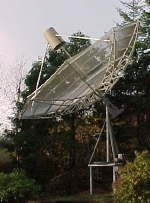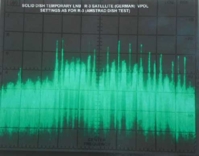 A special case: telescopes to capture radio waves (for amateur use)
A special case: telescopes to capture radio waves (for amateur use)
Radio astronomy is concerned with capturing the Universe in a completely different way than we are used to. Every time we see the stars during a starry night, or see an object through a telescope, what we are capturing is the «optical information» of celestial bodies, that is, the portion of their radiation that reaches us in the visible range. Because the electromagnetic spectrum is much broader than just the visible range, astronomy has needed instruments capable of capturing the rest of the spectral information. Precisely, the amateur today has tools that allow him to explore not only the optical range, but also the wide space occupied by radio waves, and to do so, build equipment designed for this purpose.
The radio spectrum involves venturing into different frequencies within a wide field, and based on this we can capture different phenomena invisible to our eyes. Depending on the equipment used, it is possible to capture the waves coming from the planet Jupiter, a volcanic eruption on the Io satellite, the constant signals coming from the Sun, among many others. The main field of action of the amateur radio astronomer is decametric or short wave observations, which are carried out around 20 MHz. With this, synchrotron radiation from the plane of the Milky Way, radiation from Jupiter and solar activity can be captured. .
NASA has a project called Radio Jove, dedicated to solar and planetary radio astronomy for students. For this, a kit is for sale with everything necessary to install antennas and receivers. The respective kit can be ordered from this page. There is also the project INSPIRE, also from NASA, for the exploration of very low frequency radio waves, whose purpose is more aimed at ionospheric exploration and radio waves related to meteorology. They also have a kit that can be ordered, from this page.
 Finally, there are various guides for building a homemade radio telescope, capable of performance as good as or better than those of the aforementioned projects. POT. There isAmateur Society of Radio Astronomers, with multiple resources for those who are new to the subject, and from the radio astronomer's page Randy Stegemeyer, describes the project of your personal radio telescope. From the pageRadiosky, different software is described to process radio astronomical data.
Finally, there are various guides for building a homemade radio telescope, capable of performance as good as or better than those of the aforementioned projects. POT. There isAmateur Society of Radio Astronomers, with multiple resources for those who are new to the subject, and from the radio astronomer's page Randy Stegemeyer, describes the project of your personal radio telescope. From the pageRadiosky, different software is described to process radio astronomical data.

